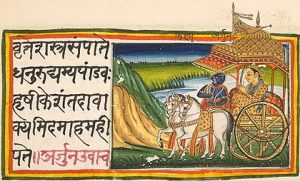Language/Sanskrit/Grammar/Plurals
Hi Sanskrit learners!😊
Learning Sanskrit Grammar can be a daunting task, but with the right approach and dedication, you can master it in no time!
Plural Formation
In Sanskrit, the plural is formed by adding the suffix -āḥ to the singular form of the noun. This suffix is added to the stem of the word, which is usually the same as the singular form. For example, the plural of rāmaḥ (Rama) is rāmāḥ.
Exceptions
There are some exceptions to this rule. For example, the plural of devaḥ (god) is devāḥ, not devaḥāḥ. Similarly, the plural of śiṣyaḥ (disciple) is śiṣyāḥ, not śiṣyaḥāḥ.
Irregular Plurals
Some nouns have irregular plurals. For example, the plural of guruḥ (teacher) is guravāḥ, not guruḥāḥ. Similarly, the plural of putraḥ (son) is putrāḥ, not putraḥāḥ.
Compound Nouns
Compound nouns also have their own rules for forming the plural. For example, the plural of dvīpaḥ (island) is dvīpāḥ, not dvīpaḥāḥ. Similarly, the plural of śāstraḥ (scripture) is śāstrāḥ, not śāstraḥāḥ.
Summary
To summarize, the plural of most nouns is formed by adding the suffix -āḥ to the stem of the word. However, there are some exceptions and irregular plurals. Compound nouns also have their own rules for forming the plural.
If you have any questions, please ask them in the comments section below.
Feel free to edit this wiki page if you think it can be improved. 😎
Related Lessons

